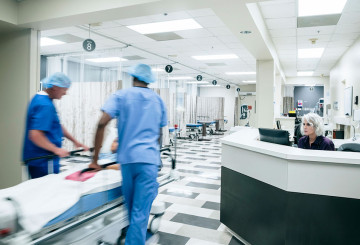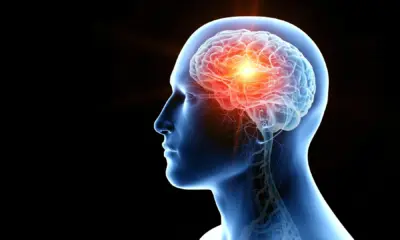Health
AI Models Revolutionize Early Sepsis Detection in Children

Sepsis remains a leading cause of death among children globally, prompting urgent efforts to enhance early detection and intervention methods. Researchers at Northwestern University and the Ann & Robert H. Lurie Children’s Hospital of Chicago have developed advanced artificial intelligence (AI) models that can accurately identify children at high risk for sepsis within 48 hours of their arrival in emergency care. This groundbreaking work aims to facilitate timely treatment and potentially save lives.
The study, published in JAMA Pediatrics, is notable for being the first to utilize AI to predict sepsis in children based on the newly established Phoenix Sepsis Criteria. Prior predictive models had struggled to improve early diagnosis rates, underscoring the significance of this advancement. According to Dr. Elizabeth Alpern, a professor of pediatrics at Northwestern University Feinberg School of Medicine and head of emergency medicine at Lurie Children’s, “The predictive models we developed are a huge step toward precision medicine for sepsis in children.”
Research Methodology and Findings
The multi-center study involved five health systems within the Pediatric Emergency Care Applied Research Network (PECARN). By accessing a large dataset that encompassed a diverse patient population, the researchers were able to retrospectively analyze emergency department visits from January 2016 to February 2020. This analysis informed the development of machine-learning models, which were then validated using data from 2021 to 2022.
The focus of the study was on the initial four hours of care, during which the AI models aimed to predict the likelihood of sepsis developing within the subsequent 48 hours. Children who were already diagnosed with sepsis upon arrival or within those early hours were excluded from the analysis. This targeted approach allowed researchers to concentrate on predicting sepsis and initiating proven lifesaving therapies as soon as possible.
Key predictive features included emergency department triage scores, heart rate, respiratory rate, and pre-existing medical conditions such as cancer. The models demonstrated a robust ability to identify children at risk without misclassifying those who were not.
Future Implications and Research Directions
The implications of this research are profound, particularly in the context of precision medicine. Dr. Alpern emphasized the importance of ensuring that the models were free from biases, stating, “We evaluated our models to ensure that there were no biases.” Looking ahead, combining EHR-based AI models with clinician judgment could further refine prediction accuracy, enhancing patient outcomes.
This project received funding from the National Institute of Child Health and Human Development (NICHD) under grant R01HD087363, supporting the ongoing commitment to improving pediatric healthcare through innovative technology. With this study, the landscape of sepsis detection in children is poised for transformation, promising a future where timely intervention can significantly reduce mortality rates associated with this critical condition.
-

 Technology4 months ago
Technology4 months agoDiscover the Top 10 Calorie Counting Apps of 2025
-

 Health2 months ago
Health2 months agoBella Hadid Shares Health Update After Treatment for Lyme Disease
-

 Health3 months ago
Health3 months agoErin Bates Shares Recovery Update Following Sepsis Complications
-

 Technology3 weeks ago
Technology3 weeks agoDiscover 2025’s Top GPUs for Exceptional 4K Gaming Performance
-

 Technology2 months ago
Technology2 months agoElectric Moto Influencer Surronster Arrested in Tijuana
-

 Technology4 months ago
Technology4 months agoDiscover How to Reverse Image Search Using ChatGPT Effortlessly
-

 Technology4 months ago
Technology4 months agoMeta Initiates $60B AI Data Center Expansion, Starting in Ohio
-

 Technology4 months ago
Technology4 months agoRecovering a Suspended TikTok Account: A Step-by-Step Guide
-

 Health4 months ago
Health4 months agoTested: Rab Firewall Mountain Jacket Survives Harsh Conditions
-

 Lifestyle4 months ago
Lifestyle4 months agoBelton Family Reunites After Daughter Survives Hill Country Floods
-

 Technology3 months ago
Technology3 months agoUncovering the Top Five Most Challenging Motorcycles to Ride
-

 Technology4 weeks ago
Technology4 weeks agoDiscover the Best Wireless Earbuds for Every Lifestyle





















